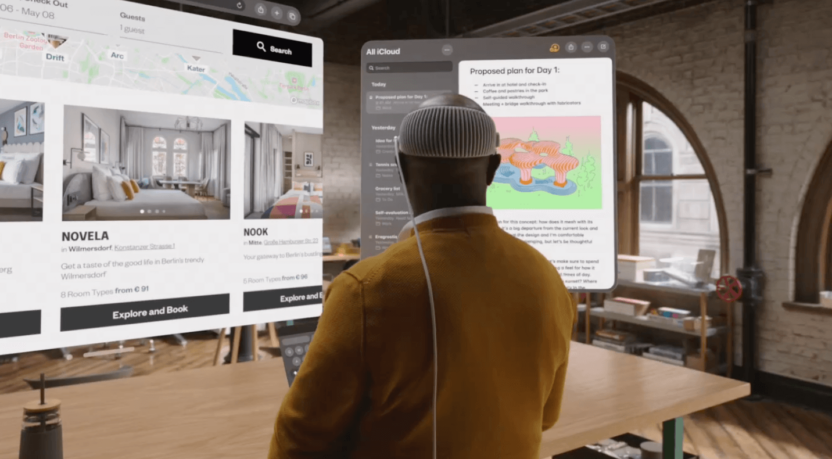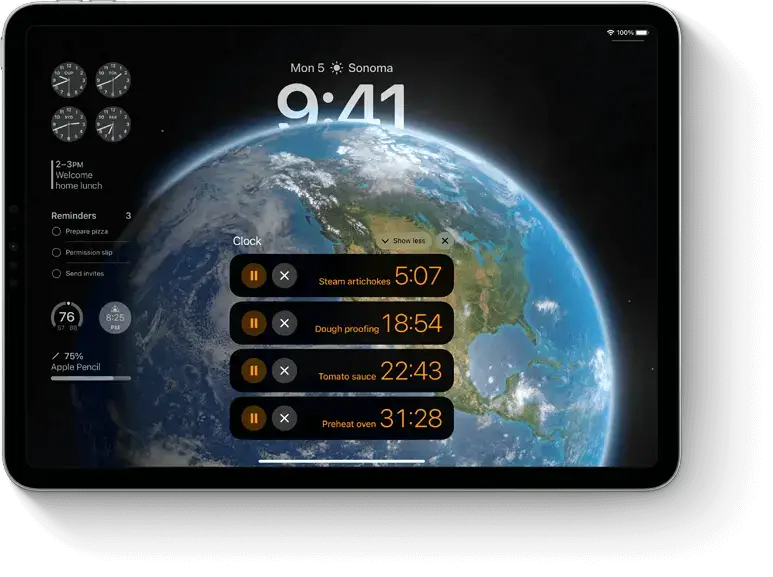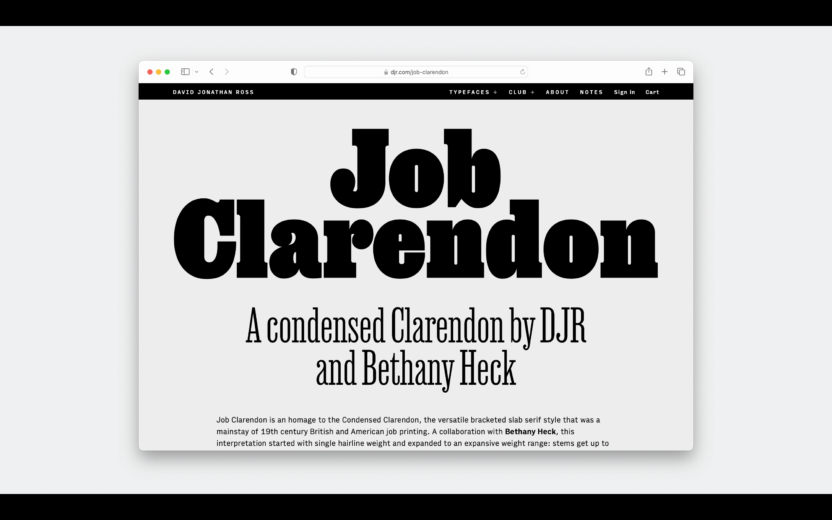[LIVE BLOG] Apple WWDC 2023: Decoding Revolutionary New Updates For Marketers
This week we are covering the WWDC 2023 LIVE! Bookmark this article to get live updates every morning!
![[LIVE BLOG] Apple WWDC 2023: Decoding Revolutionary New Updates For Marketers](https://www.moengage.com/wp-content/uploads/Apple-WWDC-2023.png)
Reading Time: 15 minutes
The world is going crazy over Apple’s newest product, the Apple Vision Pro, announced at Apple WWDC 2023. It isn’t just an AR/VR headset, it’s a “spatial computer,” as Apple puts it! This magical technology puts a computer over any consumer’s physical space in real-time. It’s set a new precedent for this category, and there’s so much potential for marketers and developers here. Let’s unpack what this and other updates from Apple’s Annual World Wide Developer Conference mean for marketers in this article.
| Note: We’ll be live-blogging from Apple WWDC 2023 throughout the week of Jun 5-9. You can bookmark this tab to stay tuned! Last live update: 8 June 2023; 5 PM PT (Pacific time). |
An Incredible New Device for New Experiences
The all-new Apple Vision Pro lets you view and interact with digital content as if it’s right there in your physical space. Apps respond to your eyes, hands, or voice, and you can expand apps to any size you want. You can also turn the digital crown to increase or decrease levels of immersiveness, choosing to stay focused on your surroundings or blur them out at your will.

Apps respond intuitively to your gestures, and you can move them around in your physical space to place them anywhere you want. Use your eyes or hand gestures to switch between apps and browse systems just by looking at them!
For marketers, this opens up a whole new world of possibilities. The Apple Vision Pro will be used across industries — be it Ecommerce, education, gaming, media and entertainment, or even banking.
| 💡MoEngage Pro Tip 💡
Try to figure out how consumers would use your app or website over the Apple Vision Pro, and see if you can tailor a personalized experience for each of them. |
Increase Engagement With Thoughtful Widgets
Widgets let you bring the most important information from your app to the home screen. Earlier, widgets were primarily available on the iPhone, but this update brings widgets to all Apple devices.

The new iPadOS 17 adds widgets to the home screen and makes them interactive, and the new macOS Sonoma brings widgets to the desktop. On the new watchOS 10, you can turn the dialer to see new widgets, and the Smart Stack automatically brings the most relevant widgets up front.
These new widgets offer greater support for interactivity — for example, you can check off a reminder right from the widget without having to enter the app. There’s also widget continuity between the iPhone and the Mac, which means you can check off one item on the iPhone and the next item on the Mac, and get all your changes synced together.
| 💡MoEngage Pro Tip 💡
If you have an app, check if a widget would make sense for you. If it does, then you can leverage behavioral analysis to understand which aspects of your app would be most relevant for a widget, and create a sensible widget that helps your customers. |
Improve Discoverability with TipKit
As a marketer, you’ll know that product and feature discoverability is a core issue that the industry has been trying to solve. Customers might love certain features, but they just don’t discover them on time!
To help with this, Apple has introduced a new framework called TipKit, which intelligently educates customers about the right features at the right time. Think of it like an intelligent, personalized app walkthrough.

TipKit provides customizable templates to educate customers on product functionalities and give them a sensible walkthrough.
| 💡MoEngage Pro Tip 💡
You can segment your customers and add targeting to TipKit templates accordingly. This ensures that these prompts are delivered at the right time and the right place within your app. |
Personalize Your Web Apps
The new update to Safari enables you to convert any website into a Web App. This means that your website gets an app-like desktop experience when a customer chooses to launch it.

The best part about this update is that there’s zero development effort required to convert a website into a Web App. Customers can choose to convert any website into a Web App.
| 💡MoEngage Pro Tip 💡
This is your chance to create a great website experience using powerful website personalization. You can personalize your website for every customer according to their preferences, affinities, and behavior. |
Analyze Ad Performances With SKAdNetwork
An important aspect of creating a good customer experience is understanding what’s working and what isn’t. Marketers must be constantly aware of the performance of their campaigns, and SKAdNetwork helps iOS app marketers stay on top of their analytics.

This year’s update to SKAdNetwork helps you understand which ads drive more customers to your apps. You can measure how a particular ad campaign drove app downloads, how your ads influenced re-engagement and reactivation. You can also measure conversions after a customer taps on your ad.
| 💡MoEngage Pro Tip 💡
Insights-led engagement enables you to stay in touch with customer requirements and craft campaigns that respond directly to their needs. Check out this ebook for more tips on insights-led engagement and learn how you can improve your iOS app experience. |
Audit Your Apps for Accessibility

Apple estimates that 1.3 Billion+ consumers struggle with disabilities that affect the way they interact with devices. As an app marketer, it’s important to keep all audiences in mind and ensure that your brand’s customer experiences are accessible to everyone.
To help with this, Apple now provides a tool called the Accessibility Inspector, which allows you to find, diagnose, and fix accessibility issues inside your app. The inspector can audit every view of your app and test it for accessibility.
Any issues found are displayed in a table with detailed descriptions for each issue. The accessibility audits are now automatable, and give you a way to ensure that every aspect of your app is accessible to all audiences.
| 💡MoEngage Pro Tip 💡
If you’re unsure which features to test for accessibility, you can run a User Path Analysis first and see if there are any anomalies in the customer journey. If customers drop off at random journey points, it might point to an accessibility issue. |
Optimize Websites for Spatial Computing
With the launch of the new Vision Pro, customers now have an entirely unique way to experience your websites. They can reach out and touch your pages as if they’re doing so physically, look at links, tap their fingers together to click on them, and so much more.
The responsive design ensures that websites automatically adapt from iPad/Mac sizes to fill an entire room. Customers can also leverage “Quick Look” to place objects on their surrounding physical spaces. Imagine looking at a teacup for sale and placing it on your table to see if it suits your architecture!

This technology will revolutionize the way consumers shop for things online. More consumers will rely on Quick Look in the future to see how a product fits into their space before they buy it. That makes it more critical than ever to ensure that customers are guided to relevant products that suit their needs.
| 💡MoEngage Pro Tip 💡
You can leverage Dynamic Product Messaging to send out relevant product recommendations based on customer behavior and preferences. |
Deliver Concise Information with Live Activity
Live Activity gives consumers a quick, glanceable way to monitor and follow ongoing background activities. Imagine if you’ve booked a cab and are waiting for it to reach your destination. You can check your home screen’s Live Activity to see how far away the cab is at any point in time and when it is estimated to reach you.

Consumers can click on Live Activities to open up expanded views, and clicking on expanded views lead to different areas within your app.
Live activities are displayed on the lock screen, dynamic island, and iPhone standby. These are concise, relevant bits of information that give all useful information at one glance.
| 💡MoEngage Pro Tip 💡
As an app marketer, you can analyze customer behavior and gather feedback to determine what information can be displayed on your Live Activity screens. You can also figure out how customers navigate through your app from here. |
Spotlight Your Apps with App Shortcuts
“App Shortcuts” lets consumers set up quick automations to simplify routine tasks. Shortcuts can be as simple as a voice command for adding items to your grocery list.

Consumers can trigger App Shortcuts via Siri voice search, the Spotlight feature, or the Shortcuts app. These shortcuts help increase the visibility of your app throughout the system. They’re also a great way to encourage customers to use your app repeatedly, nudging them to create a habit and become loyal customers.
Shortcuts also lower the friction of opening and closing apps for repeated tasks, and they launch more functionality for apps that run in the background.
App development teams can set up Shortcut suggestions that give customers a quick idea of possible shortcuts they can leverage.
| 💡MoEngage Pro Tip 💡
App marketers can analyze customer behavior to see what kind of features might need Shortcuts, and suggest these to customers over the Shortcuts app. |
Stay On Top Of Your App Store Pricing
Apple has now introduced a global pricing feature that lets you manage your pricing across 44 currencies and 175 regions. You can leverage the tool to simplify the pricing for your apps, in-app purchases, and subscriptions at a regional level.
You now have 900 possible price points available across all 44 currencies. The new tool lets you define a base pricing region from any one of the 175 regions. Once you’ve selected your base region, you can define your base price. The App Store then automatically generates pricing for other regions based on your base price.

Pricing generated for other regions gets automatically updated according to foreign exchange rates and tax fluctuations for each locality.
You can add temporary price changes for a particular region alone. You can also schedule a global price change for the future. The App Store automatically updates pricing across other regions accordingly.
| 💡MoEngage Pro Tip 💡
Analyze your target market, customer base, and business requirements before you determine which region to mark as your base region. |
Give Customers More Privacy Controls

The new updates to Apple’s privacy settings give customers more granular control over the content they share with their apps. This includes updates to five types of content-sharing control, listed below.
Photos Picker
Customers can now choose to share only select photos with their apps, instead of giving apps permission to access their entire gallery. Options available include “Limit access” and “Allow full access,” and these access Pickers are sent to customers periodically.
Screen Capture Picker
The latest update lets customers control which windows and screens your app can access during a Screen Share. Earlier, consumers had only one option, which was to share the entire screen or window. With macOS Sonoma and higher, they can select a single screen and share that alone during the session.
Calendar Access
Your calendar app has access to a lot of sensitive information, such as doctor’s appointments and travel plans or tickets. With this new update, customers can restrict access to their Calendars. Apps can create new events on Calendars by default, or request to get “Add-only” access to Calendars without reading other Calendar items.
Sensitive Content Warnings
When a customer receives or shares photos that likely contain nudity, your app can now display a Sensitive Content Warning. The warning includes any photos shared via Airdrop, contact posters on iPhone, the Photos app, or Facetime. If your app’s audience consists of minors, or if customers are at risk of receiving sensitive content, you should deploy these warnings.
Oblivious HTTP
Earlier, network operators had complete access to a consumer’s internet usage and their IP address. IP addresses can easily be exploited to identify customers and link them to their internet usage. With this new update, Apple ensures that no party has access to client IP and content at the same time. This protects consumer anonymity and keeps their sensitive data safe.
| 💡MoEngage Pro Tip 💡
Use in-app messages to help your customers understand what levels of access are available, what each entails, and why your app needs access, so they can make an informed decision to grant data access. |
Communicate Your Privacy Settings Clearly
That brings us to the next update: Privacy Manifests. Privacy Manifests are a new tool to help you audit and identify the privacy practices deployed by your app and any dependent apps. You can access a privacy report in PDF format to understand all declared data uses.
The report is organized in a manner similar to Privacy Nutrition Labels (PNLs) so that you can compare notes and ensure that your PNLs are always up-to-date.

ICYMI, Privacy Nutrition Labels give consumers a way to learn how your app collects and uses data, data tracking, and data linkage.
| 💡MoEngage Pro Tip 💡
Scrutinize your Privacy Reports carefully to understand what data your app collects, and be transparent about your privacy practices via safe nutrition labels. |
Improve Your App Clips
App Clips are a lightweight version of your apps that allow customers to try out the features of your app without having to download it. These are discoverable over messages, Safari, Spotlight search, and more.

App Clips can be used in a variety of ways, such as encouraging customers to order food via an App Clip without leaving their messaging app. Brands can also leverage App Clips to give consumers a quick game demo, or a sneak peek into an exciting new feature.
Earlier, App Clips were restricted to sizes of 15 MB or below. Now, brands can upload App Clips of up to 50 MB. This gives you more space for richer app experiences!
| 💡MoEngage Pro Tip 💡
Leverage App Clips to help customers reach the “Aha” moment instantly and discover why they love your brand. |
Leverage New Media Formats
Did you know that it’s been 36 years since GIFs were introduced? 30 years since JPEG, and 26 since PNG was introduced. These are all image formats the internet grew up with, but each poses limitations and challenges.
JPEGs provide progressive loading, where a part of the image loads first, and the rest continues to load as the internet bandwidth increases. This format is most convenient when network speeds aren’t fast. But the JPEG compression technique is lossy, which means image quality is reduced during transmission and compression.
GIFs have 8-bit color restrictions, which means they can only contain 256 colors, because of which they’re unsuitable for high-resolution imagery. Meanwhile, PNGs don’t support non-RGB color schemas such as CMYK, which is primarily used for color printing, and PNG files require too much storage space.
As the internet evolved, new media formats emerged to make the most of changing requirements and wrap around the limitations of existing formats. Safari 17 now supports 4 new formats:

WebP
- This is a modern image format that uses advanced compression algorithms to achieve smaller file sizes without compromising on image quality.
- Since WebP file sizes are smaller, WebP websites can load faster and perform better.
JPEG-XL
- This new format was created to offer high compression rates and image quality while also providing progressive loading.
- This is best suited for images served over slow connections so that customers can see something even before the image is fully loaded.
- JPEG-XL can convert losslessly from JPEG.
- This format isn’t supported by many devices or browsers.
AVIF
- The AVIF format uses AV1 video codec to achieve high compression rates without compromising image quality.
- This format is widely accepted and supported across all major browsers.
- It enables up to 12 bits of color depth and can be almost 10 times faster than JPEGs.
HEIC
- Also known as HEIF, this format uses the HEVC video codec compression algorithm to achieve smaller file sizes.
- This format isn’t widely supported across other platforms, but it is the default format used for image captures across iPhone and iPad.
The best advantages of the new formats are that they support both wide color gamuts and HDR imagery. Wide color gamut lets you capture and display pictures with billions of colors on file and screen.
Meanwhile, HDR allows you to define how dark the darks can be, how light the lights can be, and how much light can be taken in. This makes outdoor landscapes or bright images more vibrant.
| 💡MoEngage Pro Tip 💡
When you’re uploading images to websites, remember to include multiple image formats as a backup in case one or the other doesn’t load on a device or browser. |
Enable Regional Pre-Orders on App Store
Pre-orders are a great way to create excitement for a new app launch or upcoming release. When you mark an app for pre-orders, the App Store automatically displays a product page for customers to place a pre-order.
On the day of your app’s release, the app will automatically be downloaded to your customers’ devices, and they will be notified as well.
The new update allows marketers to create pre-orders specific to geographical locations. You can launch the complete version of the app in the United States, for example, but put it up for pre-order in Europe.

You can also use this to soft-launch a beta version of your app in certain countries and create pre-order hype in other important market regions.
| 💡MoEngage Pro Tip 💡
You can add localized “Pre-order” badges and CTAs to your websites via the App Store’s pre-order page to increase conversions! |
Increase Accessibility With Speech Synthesizers
There is always a chance that some of your customers will be unable to speak, have visual or speech impairments, or lose their voice in the future. Apple’s Speech Synthesizers give you a way to make your app more accessible to these audiences. Customers can use these synthesizers to voice out the text of their choice.

There is now a new addition to Speech Synthesizers: Personal Voice. Consumers can use this feature to record their own voice and generate a synthesized voice from those recordings.
This will be possible on both iOS and macOS with the latest updates. Remember, usage of a customer’s personal voice is very sensitive and must not be misused. The personal voice feature should primarily be used for augmentative or alternative communication apps. This is a great way to make your app inclusive for consumers who may be at risk of losing their voice.
| 💡MoEngage Pro Tip 💡
Segment your customers to see if any of them are already using speech synthesizers. If they are, you can send them a campaign informing them of the new personal voice feature on your app. |
Create Accurate Order Tracking
Last year, iOS 16 introduced a native order tracking capability to iPhones. This helped consumers track any orders placed with participating merchants via inline messages or a widget. This year, this feature’s got a few cool upgrades!
Consumers can now track orders over maps if the order has specified a pickup time and location. Maps will also suggest it via Siri Suggestions.

You can also indicate the type of delivery being used and mark whether a product is being shipped or delivered. These updates will support courier and food delivery apps with more accuracy.
You can also attach receipts for a transaction and mention if these receipts are for a purchase or refund. Receipts will show up along with the order tracking details.
And finally, you can now add order tracking to the Apple Wallet. Consumers will be able to click an order tracking link and add it to their Wallet so they can stay on top of updates at all times.
| 💡MoEngage Pro Tip 💡
Remember to include a “Track with Wallet” button or link with any order tracking, confirmation, or delivery campaigns you send out! |
Debug Typography With Safari Web Inspector
The Safari Web Inspector allows you to inspect any HTML and CSS elements of your webpage. You can inspect any and all resources and activities of a website, web app, web extension, or home screen web app using the Web Inspector.
You can also inspect typography elements on your webpages. It’s not easy to get typography right on websites. There are a lot of factors at play, such as whether the right font file is loaded, whether it is in a format supported by the browsers, and whether the features you’ve enabled are available.

While typography might seem like a good-to-have feature, it plays an important role in customer experience. If your customers can’t clearly read what’s written on your pages, they might leave. And if your typography isn’t legible or attractive, they might not stay long, impacting your bounce rates, which in turn impacts your website’s SEO rankings.
You can inspect elements of typography and see what typographical variations are used, such as bold styles, italic, oblique, or elongated styles. The Web Inspector now also displays a warning for any typography that uses synthetic styles, such as when strokes are made artificially thicker or cursive is used to denote italic font.
| 💡MoEngage Pro Tip 💡
Always debug your webpages and check if your expected font formats were loaded and whether they render as expected for a good customer experience. |
Facilitate Private Web Extention Experiences
Over 2,000 web extensions for Safari are available on the App Store today. Extensions let you customize and improve your browsing experience. With this new update, web extensions will be available on xrOS as well, and they will work the same way as they do on iPad OS and iOS.
When an extension is first turned on, it doesn’t have access to any websites the customer visits. The first time the extension tries to access a new website, Safari will alert the customer via a quick pop-up.

These alerts give a detailed description of the access requirements an extension wants, and allows customers to select access levels. Customers can select if they want to allow access to a website for “One Day” or “Always Allow” access.
When they upgrade their browser to Safari 17, all extension permissions will be migrated. Additionally, Safari will display a banner with an option for customers to increase their privacy level for an extension. The banner will inform them that an extension currently has access to the website and ask if they want to maintain current access levels or increase their privacy.
Customers maintain full control over the access levels of any extension, and these can be granted or revoked at any time of their choosing via the Settings menu.
| 💡MoEngage Pro Tip 💡
Deploy website personalization and show your customers you truly care about them, giving them more confidence to enable your extensions. |
Wrapping Up
These are the biggest updates from Apple WWDC 23, folks! We’ve consumed over 175 video sessions and extracted the most relevant information for marketers so you don’t have to. We hope you enjoyed reading this. Remember to share this with your marketing team and let us know what you think with a quick shout-out over social.
See you next WWDC!







